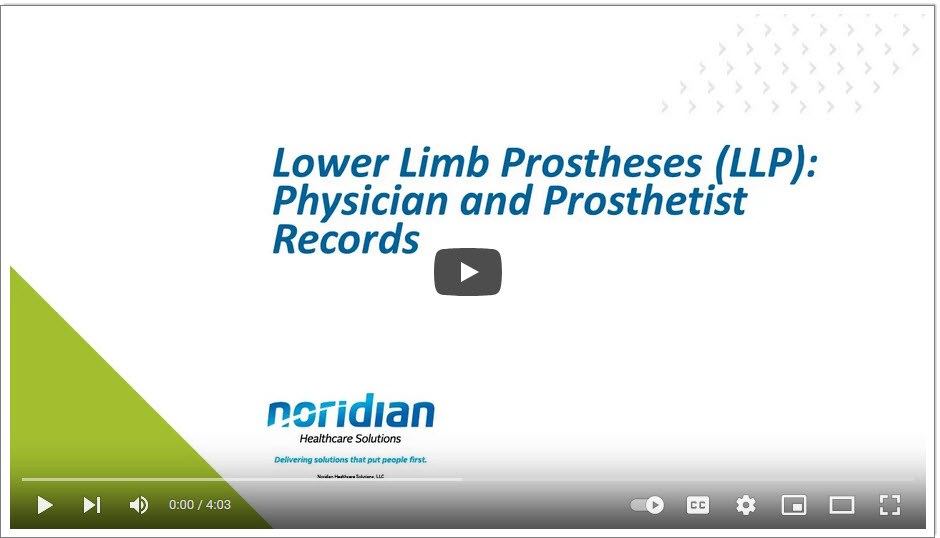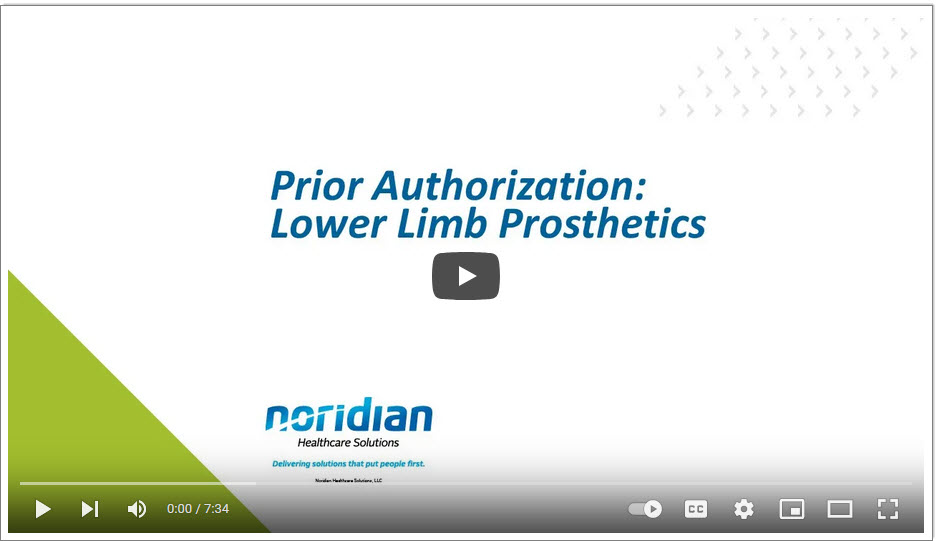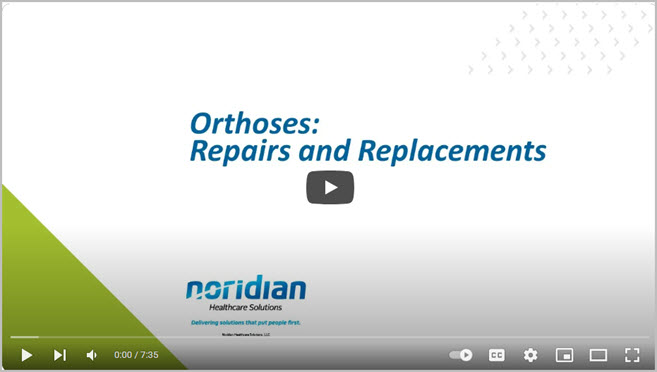Canadian Customers: Take a look at our simplified Returns Process
Reimbursement Services and Resources
The Reimbursement staff at Ottobock fields more than 4,160 calls and 19,760 emails from patients and practitioners annually. Many of these calls are requests for documentation to support reimbursement of prosthetic and orthotic products and therapies.
After we help a customer solve a challenge, we often create a tool that can help other people navigate the same challenge, for example to help you create proper documentation for billing and coding purposes.
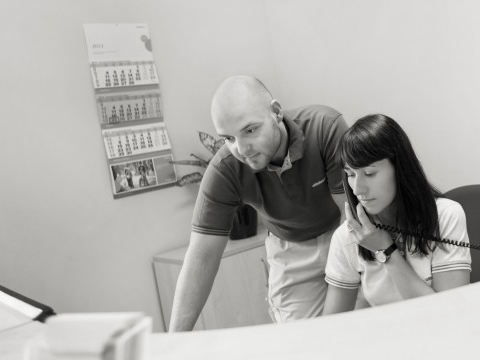
Get Reimbursement Support
Our team is here, ready to help. Contact us if you are in need of reimbursement support or have questions about our services.
![]() Contact us via form
Contact us via form
![]() Email us at reimbursement911@ottobock.com
Email us at reimbursement911@ottobock.com
![]() Call us at 800 328 4058 - Please have following information available: Your Ottobock account number, which Ottobock product are you calling for, and which insurance provider you are working with.
Call us at 800 328 4058 - Please have following information available: Your Ottobock account number, which Ottobock product are you calling for, and which insurance provider you are working with.
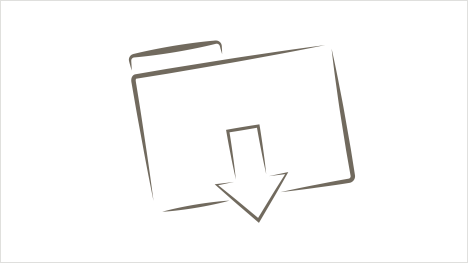
Suggested HCPCS Codes - U.S. only
Suggested L-Codes for Prosthetics:
Suggested L-Codes for Orthotics:

Reimbursement News and Updates
Varos Socket and Liner are now PDAC Verified!
We are excited to announce that as of August 5, 2025, the Varos Socket (5A60) and Varos Liner (6Y200) have been approved by the Pricing, Data Analysis and Coding (PDAC) Contractor with the following approved HCPCS codes: L5783 and L5673 for billing the four Durable Medical Equipment Medicare Administrative Contractors (DME MACs).
What does this mean?
Based on this review and application of DME MAC policy, the HCPCS code(s) listed below should be used when billing the DME MACs:
Definitive:
- L5321 above knee, molded socket, open end, SACH foot, endoskeletal system, single axis knee
- L5950 addition, endoskeletal system, above knee, ultra-light material (titanium, carbon fiber or equal)
- L5649 addition to lower extremity, ischial containment/narrow M-L
- L5671 addition to lower extremity, below knee/above knee suspension locking mechanism (shuttle, lanyard or equal), excludes socket
- L5783 addition to lower extremity, user adjustable, mechanical, residual limb volume management system
- (liner) L5673 addition to lower extremity, below knee/above knee, custom fabricated from existing mold or prefabricated, socket insert, silicone gel, elastomeric or equal, for use with locking mechanism system
Preparatory:
- L5590 preparatory, above knee - knee disarticulation ischial level socket, non-alignable system, pylon no cover, SACH foot, laminated socket, molded to model
- L5950 addition, endoskeletal system, above knee, ultra-light material (titanium, carbon fiber or equal)
- L5649 addition to lower extremity, ischial containment/narrow M-L
- L5671 addition to lower extremity, below knee/above knee suspension locking mechanism (shuttle, lanyard or equal), excludes socket
- L5783 addition to lower extremity, user adjustable, mechanical, residual limb volume management system
- (liner) L5673 addition to lower extremity, below knee/above knee, custom fabricated from existing mold or prefabricated, socket insert, silicone gel, elastomeric or equal, for use with locking mechanism system
Replacement:
- L5701 replacement, socket, above knee/knee disarticulation, including attachment plate, molded to patient model
- L5950 addition, endoskeletal system, above knee, ultra-light material (titanium, carbon fiber or equal)
- L5649 addition to lower extremity, ischial containment/narrow M-L
- L5671 addition to lower extremity, below knee/above knee suspension locking mechanism (shuttle, lanyard or equal), excludes socket
- L5783 addition to lower extremity, user adjustable, mechanical, residual limb volume management system
- (liner) L5673 addition to lower extremity, below knee/above knee, custom fabricated from existing mold or prefabricated, socket insert, silicone gel, elastomeric or equal, for use with locking mechanism system
We invite you to refer to the justification letter for L5783 and also reach out to our Reimbursement Team (reimbursement911@ottobock.com or 800 328 4058 ) if you have any questions or are looking for additional support regarding funding for these devices.
A Milestone for Upper Limb Prosthetics: Pattern Recognition Now Has Its Own HCPCS Code
What this means for clinicians, patients, and the future of intuitive control with Myo Plus.
A new era in upper limb prosthetics officially begins today.
As of April 1, 2025, the Centers for Medicare & Medicaid Services (CMS) has approved a dedicated reimbursement code—L6700—for pattern recognition control systems used in myoelectric prostheses. This long-awaited decision sets an average national fee schedule of $28,931.56 and marks a historic moment for clinicians, patients, and the evolution of upper limb technology.
For providers, this change simplifies and strengthens the pathway to delivering cutting-edge solutions like Ottobock’s Myo Plus.
What Is Pattern Recognition?
Pattern recognition technology allows users to control a myoelectric prosthesis using intuitive, individualized muscle signals. Instead of relying on traditional mode switching, users train the system to recognize natural phantom limb movements and directly assign them to specific prosthetic functions—making movement faster, more responsive, and more natural.Why L6700 Matters
Until now, pattern recognition lacked a specific HCPCS code, often complicating documentation and reimbursement. The approval of L6700 represents official recognition of the clinical value and unique capabilities of this technology. It’s also a critical enabler for expanding access to next-generation systems like Myo Plus.Meet Myo Plus: Precision Reimagined
Myo Plus is Ottobock’s advanced pattern recognition system, designed to give users more control, more confidence, and less cognitive strain when using their prosthesis. With Myo Plus, users benefit from:- Intuitive Control: By linking natural phantom limb movements to prosthetic functions, users reduce their cognitive load and improve day-to-day usability.
- Direct, Seamless Access: Switching between grip patterns is instantaneous and doesn’t require external inputs, making multitasking and quick reactions easier.
- Enhanced Proportional Control: Users define their own muscle signals, allowing for precise control over speed, grip strength, and finger movement.
Empowering Clinicians to Lead with Innovation
We know that with every new coding update comes a learning curve. To support your clinical and reimbursement teams, Ottobock has developed a dedicated reimbursement guide to help justify medical necessity and ensure a smoother authorization process. Reach out to the dedicated team at reimbursement911@ottobock.com to receive the guide! You can also watch our latest Experts OnDemand webinar that dove into this topic on Ottobock’s MyLearning platform. We also offer hands-on support from our Upper Limb Sales Specialists, who can help determine candidacy and assist with demos or trials. Contact us at: upperlimbsales@ottobock.com Whether you’re looking to fit your first Myo Plus patient or you’re ready to expand your offerings, now is the time. With reimbursement pathways clearer than ever, you can lead your patients into a new world of upper limb technology—where control feels natural and possibilities are endless.- Explore Myo Plus: upperlimbsales@ottobock.com to learn more.
- Reach out to upperlimbsales@ottobock.com to learn more.
- Contact Us for Support: reimbursement911@ottobock.com
Navigating the New Medicare LCD Changes: What CPOs Need to Know
On July 18th, 2024, Medicare released the future Lower Limb Prostheses Local Coverage Determination (LCD) and its accompanying Policy Article. These changes mark a significant advancement in prosthetic care, particularly for Certified Prosthetists and Orthotists (CPOs) who work with insurance providers to secure advanced prosthetic solutions for their patients. This post will outline the key updates and explain their significance for your practice, especially concerning Functional Level Characteristics.
These updates go into effect on September 1, so let’s talk about what to expect!
Key LCD Criteria Changes
The revised LCD introduces new pathways for some K2 transfemoral amputees to access K3 prosthetic feet and knees. The criteria for qualification are divided into two levels:
Initial Criteria:
- A clinician must assess and determine the patient’s functional level.
- The medical record must provide a clear rationale for selecting a K3 knee, detailing how it will improve the patient’s functional health outcomes and help them accomplish their activities of daily living (ADLs).
- The clinician must also document why less sophisticated K2 knees are unsuitable for the patient’s specific needs.
Additional Criteria for Microprocessor-Controlled Knees (MPKs):
- The MPK must be indicated for functional level (K2) patients.
- It must include stumble recovery functionality or comparable technology.
- The patient must be capable of understanding and responding to error alerts or alarms.
- The patient should be able to manage daily charging of the device.
Please note: If these criteria are met, a K2 patient may also qualify for a K3 foot, if it is required for the "safe and proper use" of the prosthetic knee.
Policy Article Updates
The updated Policy Article enhances clarity by providing detailed characteristics associated with each functional level (K-level). It emphasizes the need for specific documentation in the medical record, particularly regarding how a K3 knee will improve the patient’s ADLs. Additionally, prosthetists' and orthotists' notes are officially recognized as part of the medical record, underscoring the importance of thorough documentation.
Implications for CPOs
- Expanded Access to Advanced Prosthetics: The updated LCD allows you to offer K3 knees and feet to a broader range of K2 transfemoral Medicare patients. This expansion enables you to provide more personalized and effective prosthetic solutions that enhance patient mobility and stability.
- Importance of Detailed Documentation: To ensure compliance with the new guidelines, it's crucial that your clinical notes thoroughly address all relevant criteria. The DME MACs are expected to scrutinize these claims closely, so make sure your documentation is precise and comprehensive.
- Understanding Manufacturer Indications: The PDAC will not verify which MPKs are suitable for K2 patients; this responsibility falls to clinicians based on the manufacturer's indications. Therefore, it is vital to ensure that the MPK you select meets the necessary criteria.
- Preparing for Implementation: The updated LCD and Policy Article will take effect on September 1, 2024. Be sure to familiarize yourself with the new "Modifiers" section and incorporate these updates into all future prosthetic claims.
Reimbursement Resources to Support You:
Ottobock is here to equip you with the tools for a successful reimbursement journey for the Kenevo or C-Leg microprocessor knee. With these latest LCD changes by Medicare, these MPKs are more widely covered, but will require more thorough documentation in the reimbursement process. Our team is here and ready to help. Contact us if you have any questions or need support.
Ottobock Leads the Charge in Expanding Access to Prosthetics for Underserved Patients
July 19, 2024 - Austin, TX - Medicare officially announces LCD changes that expand access to microprocessor-controlled knees (MPKs) for lower mobility users—a group that is often overlooked as users of this groundbreaking technology (view the changes here). Ottobock has been the driving force behind the expansion of Medicare coverage of MPKs for low-mobility patients, leading the way with two decades of research and advocacy. As the world’s largest prosthetics and orthotics manufacturer, Ottobock is proud to continue its unwavering commitment to improving access to advanced prosthetic technology for underserved patient communities.
In 2005, Ottobock initiated the first clinical study involving patients in a low-mobility user group utilizing MPKs, leading to two pivotal publications. Despite the early evidence, it wasn't until 2014 when Dr. Andreas Kannenberg published the first systematic review of five MPK studies involving patients with limited mobility. However, this was still insufficient to sway Medicare at that time. Undeterred, Ottobock continued to fund more than 80% of subsequent studies, reinforcing its dedication to this critical research.
By 2021, the cumulative efforts paid off when Dr. Kannenberg and Dr. Andreas Hahn, VP of Clinical Research & Services at Ottobock published another comprehensive systematic review, encompassing 704 patients across 15 publications and 13 clinical trials. This rigorous scientific groundwork culminated in Ottobock filing the LCD Reconsideration Request in March 2022. This request has led to the current revision of the LCD for Lower Limb Prostheses, which, upon this finalization, expand Medicare coverage of MPKs to a whole new demographic of patients who meet specified conditions.
"The journey to expanding Medicare coverage for microprocessor knees to this group of patients has been long and challenging, but immensely rewarding. Our extensive research and clinical trials have consistently shown the profound impact that advanced prosthetic technology can have on individuals with limited mobility,” stated Dr. Andreas Kannenberg, the Executive Medical Director of Ottobock North America. “This expansion is not just a testament to the hard work and dedication of our team at Ottobock; it also underscores the importance of innovation and evidence-based practice in transforming healthcare and enhancing patient outcomes. We look forward to continuing our efforts to ensure that every patient, regardless of their mobility level, has access to the best possible care."
What do the LCD changes mean?
These changes by CMS to Medicare coverage are effective September 1, 2024. The new guidelines expand access to advanced prosthetic knees for more patients, ensuring better technology is available. Changes also include specific requirements for claim processing to improve accuracy and enhance patient care by providing access to state-of-the-art prosthetics and streamlining the claims process. There were no relevant changes compared to the proposed LCD, the coverage criteria are unchanged. However, in the connected Policy Article, the DME MACs have adopted a clarification in the criteria for the K-levels that was proposed by an Interagency Workgroup back in 2017. Overall, it will be easier for prosthetists to qualify patients with accepted and published clinical criteria.
Kenevo: The Only MPK Designed Specifically for Low-Mobility Users
In alignment with Ottobock’s mission to help people maintain and regain their freedom of movement, the global manufacturer saw the need to support the growing population of lower-mobility patients. Ottobock developed the first and only MPK that is designed specifically for this patient group. With a sharp focus on safety, stability, and providing confidence, the Kenevo is unlike any other knee joint on the market today. With this Medicare decision, more patients than ever will have access to the groundbreaking product.
Ottobock Advocates for Expanded Access to Proven Prosthetic Technologies Under New Proposed LCD Changes
Our mission at Ottobock is to help people maintain and regain their freedom of movement. Our commitment includes advocacy that those with limb loss or limb difference have access to the safest and most appropriate prostheses as recommended by their clinician.
As a testimony to this commitment, we are pleased to share some exciting news. On January 18th, the DME MACs announced proposed changes to the Medicare Local Coverage Determination (LCD) for Lower Limb Prosthetics, including MPK coverage for K2 patients. This is the direct result of a LCD Reconsideration Request filed by Ottobock to the DME MACs on 03/31/2022 (read the application HERE). We started working on this policy change in 2005 with the initiation of the very first MPK study in K2 patients. Over the years, Ottobock has commissioned and supported a total of 11 clinical studies; resulting in 13 peer-reviewed publications, two peer-reviewed systematic reviews - including one meta-analysis of the study results of 704 patients that have all proved the benefits of MPK technology for K2 patients. Without this body of evidence built by Ottobock, this positive policy change would not have been possible.
CLICK HERE TO READ THE FULL ANNOUNCEMENT AND SUPPORTING DETAILS
New Documentation and Clinician Checklists for Upper Limb Orthoses
Noridian has created a Documentation Checklist and a Clinician Checklist for upper limb orthoses. The checklists were created to help suppliers and clinicians understand the requirements necessary for upper limb orthoses when providing and billing. Although there is not an Upper Limb Orthosis Local Coverage Determination (LCD) Guidance suppliers are reminded to still abide by the Standard Documentation Requirements for All Claims Submitted to DME MACs Local Coverage Article criteria when documenting medical necessity for their patients.
Resources:
https://www.cms.gov/medicare-coverage-database/view/article.aspx?articleid=55426
https://med.noridianmedicare.com/documents/2230703/16619307/Clinician+Checklist+Upper+Limb+Orthoses
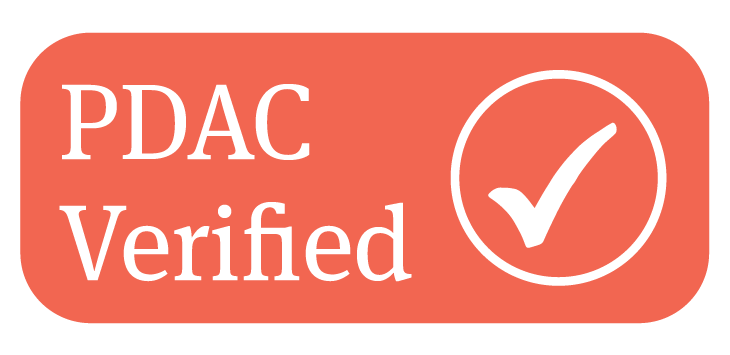
PDAC Verified: Prosthetics
Items Requiring Coding Verification Reviews
Many items require coding verification review by the PDAC contractor. As indicated in Local Coverage Determinations (LCDs) and related Policy Articles containing such HCPCS codes, claims will be denied if the products requiring coding verification review are not listed on the PDAC Product Classification List.
View the current list of HCPCS codes that require coding verification review, the applicable LCD or Advisory Article for each code, and the code requirement effective date (i.e., claims with dates of service on/after).
A full list of Durable Medical Equipment and applicable coding can be found on the PDAC Classification List.
Reimbursement Continuing Education
Local Coverage Determinations (LCD) and Policy Articles
An LCD is a determination by a Medicare Administrative Contractor (MAC) whether to cover a particular service on a MAC-wide, basis. Coverage criteria is defined within each LCD, including: lists of HCPCS codes, ICD-10 codes for which the service is covered or considered not reasonable and necessary. Medicare contractors post articles into the Medicare Coverage Database (MCD). Articles address local coverage, coding or medical review related billing and claims considerations, and may include any newly developed educational materials, coding instructions or clarification of existing medical review related billing or claims policy. VIDEO
Noridian Prior Authorization: Lower Limb Prosthetics Webinar
As of December 1, 2020, prior authorization through Medicare is required for codes L5856, L5857, L5858, L5973, L5980, and L5987 in all states and territories. Prior authorization helps Durable Medical Equipment, Prosthetics, Orthotics, and Supplies (DMEPOS) suppliers ensure that applicable Medicare coverage, payment, and coding rules are met before DMEPOS items are delivered. The prior authorization program helps to protect the Medicare Trust Fund from improper payments while ensuring that beneficiaries can receive the DMEPOS items they need in a timely manner. Prior authorization requirements are subject to the supplier’s region and guidelines. VIDEO
Noridian Orthotics Same or Similar Webinar
Claims for Orthotic braces with dates of service within the reasonable useful lifetime from the date of service of a previously paid same or similar Orthotic Brace (similar or identical HCPCS code) for the same beneficiary, for the same anatomical site, will be denied as the reasonable useful lifetime requirement has not been met.
Reasonable Useful Lifetime (RUL) is the period of time, after which Medicare payment can be made for replacement of DME that is lost, stolen, or irreparably damaged. Computation of the RUL is based on when the equipment is delivered to the beneficiary, not the age of the equipment. The RUL is used to determine how often it is reasonable to pay for the replacement of DME under the Medicare program and is not explicitly set forth as a minimum lifetime standard. When it comes to RUL, one must consider "irreparable damage" and "irreparable wear". Damage refers to unexpected events, such as loss or theft, and are covered under RUL. Wear is the deterioration sustained from day-to-day usage over time that cannot be traced to a specific event. Wear is not covered by Medicare and does not meet the requirement of RUL.
To replace a same or similar Orthotic brace before the useful lifetime has expired, there must be a documented reason why the current device no longer meets the patient’s functional needs. There are a few tips you can use when checking same or similar equipment. Noridian and CGS have developed the following Medicare resources:
FAQ
Where do I find more Reimbursement Documents?
To help you get appropriate reimbursement your business and patients, we provide a comprehensive list of documents, guides, and resources for you to refer to and use as needed.
Any Reimbursement Document is located under the DOCUMENTS section on the product page.
As an example, visit the C-Leg
- Reimbursement Documentation Guides: The Documentation Guide goes over medical justification, coding, and billing suggestions for Ottobock high tech products.
- Clinical studies: References and studies related to Ottobock devices; including Clinical Research Summaries, Bibliographies, and links to Published Research.
Find Evidence Essential Documents by visiting C-Leg, Kenevo, Genium, X3, Harmony, and C-Brace.
Do you offer any other training or information?
Audit Help: Essential Elements of documentation required for Medicare - U.S. only
What Topics do RACs Review? Stay in the know on proposed and approved topics that RACs are able to review.
- Name of the Review Topic
- Description of what is being reviewed
- States / MAC regions where reviews will occur
- Review Type (complex review / automated review)
- Provider Types
- Affected Codes
- Applicable Policy References
- CMS Approved Audit Issues
Resources for patients: Videos - U.S. only
In addition to our webinars for healthcare professionals, we also created a short series of informative videos to help patients better understand their rights and the funding process for medical devices. Browse the links below to watch them.
Contact the Reimbursement Team
We are looking forward to hear from you!
